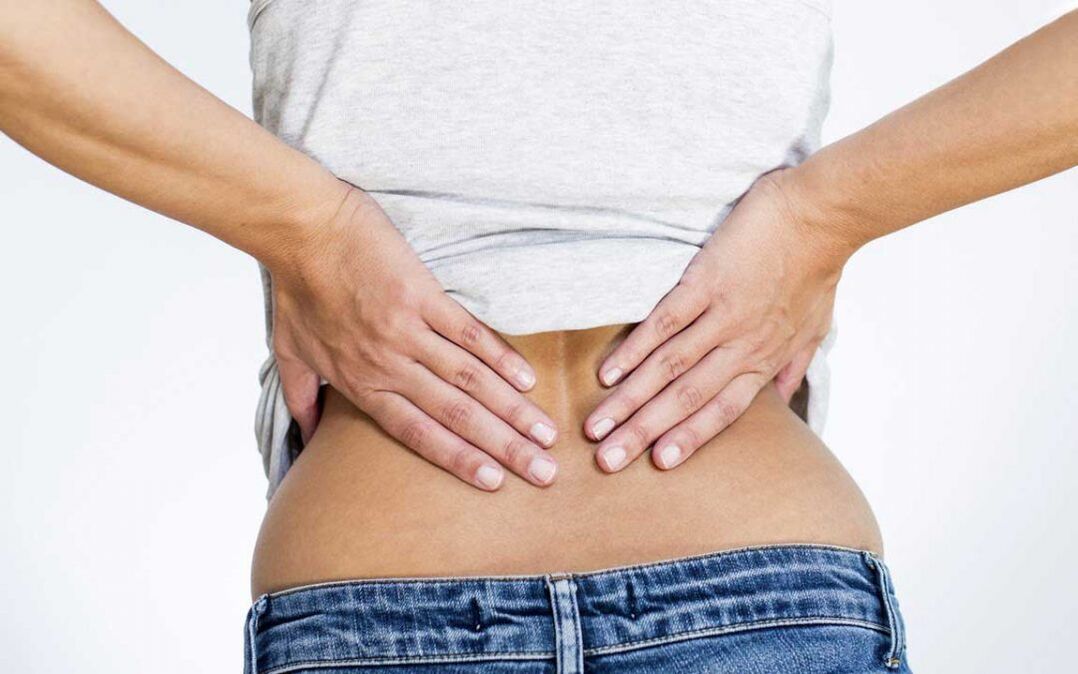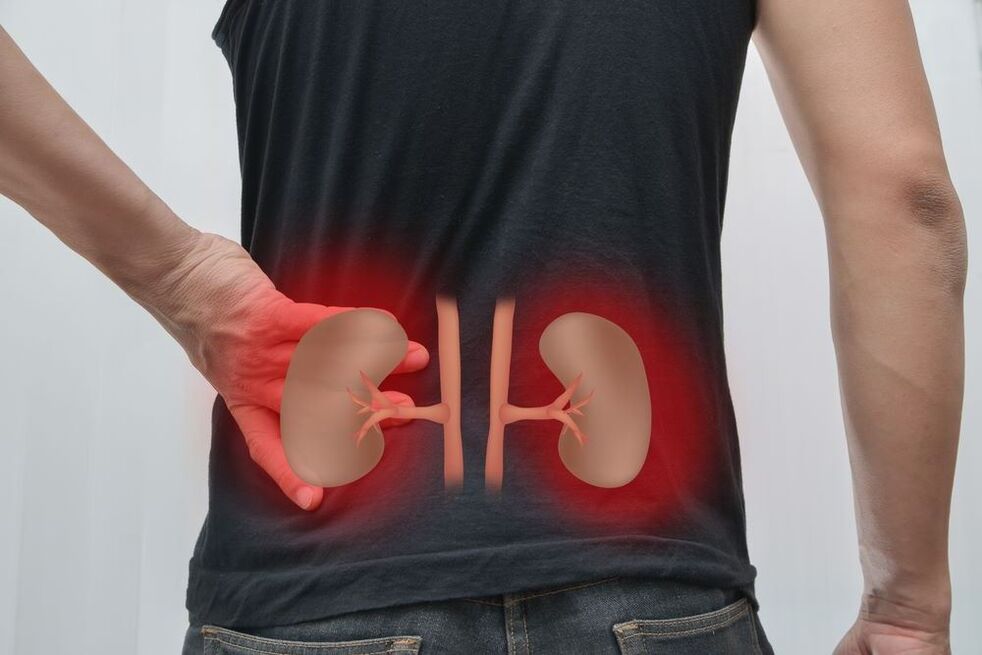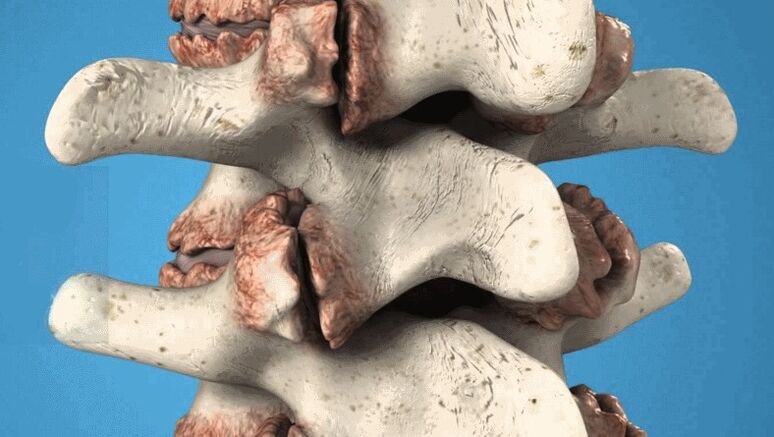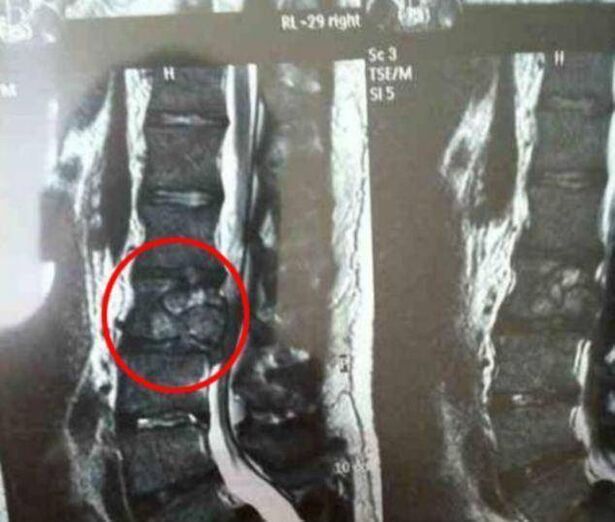
There is practically no person who at least once in his life will not experience back pain in the lumbar region. This is how we pay for walking upright and our daily habits.
In addition to the damage that can affect the spine, its muscles, nerves and ligaments, it is worth remembering that sometimes the back hurts in the lumbar region with internal diseases - diseases of the kidneys, digestive tract and female genital organs.
Symptoms of low back pain can range from dull to sharp. The pain may go away on its own or become chronic (symptoms have been present for more than three months).

Dangerous! You should consult a doctor immediately if:
- pain in the lumbar region appears suddenly after an obvious back injury;
- the temperature rises sharply, there are vegetative disorders, loss of consciousness, sweating, difficulty breathing;
- involuntary emptying of the bowel and bladder occurs;
- there is numbness in the groin area;
- there is weakness of the lower extremities, their paresis or paralysis, impaired sensitivity;
- pain is given to the stomach and increases sharply when coughing or sneezing;
- symptoms appear against the background of sharp weight loss, prolonged use of steroids, immune deficiency;
- in the family history there are cases of cancer, inflammatory or degenerative diseases of bone and cartilage tissue.
Why does the back ache in the lumbar region?
Myofascial pain
Muscle tension or spasms may develop gradually or occur suddenly. With high loads, the damage affects not only muscle fibers, but also the ligamentous apparatus and fascia.
Muscle pain in the lower back appears after:
- lifting heavy weights or overexerting yourself at work or playing sports;
- exercise from time to time. Muscles are especially vulnerable if you are inactive during the work week and then spend hours in the gym on the weekends;
- a sharp increase in own body weight, during which the muscles do not have time to grow;
- sitting for a long time or standing in an uncomfortable position;
- carry a bag every day in one hand or over the shoulder;
- posture disorders. The spine performs its best support and protective function when you are not slouching. The muscles in the lower back experience the least stress when you are seated with good support under your lower back, and in a standing position, distributing the load evenly on both legs.
If the back hurts after bruises, fractures, sprains, hypothermia, infectious diseases or helminthic invasion, then myositis (inflammation) of the muscles of the lower back may be suspected. Severe pain is constantly present due to inflammation of the muscle fibers, "nodules" are felt in the muscles - the site of spasm. Inflammation can be acute or take a chronic form. With a long course of the disease, the pain is unstable, aggravated by prolonged lying or sitting, in the afternoon or when the weather changes. Touching the muscles causes pain and discomfort, the muscles of the lower back are in constant tension, inflammatory edema is formed, the temperature rises locally and at the level of the whole organism.
With muscle spasms, the spinal nerve roots are violated, so attacks often resemble the image of sciatica or sciatica - there is a burning pain along the back of the thigh and lower leg, the limbs become numb, they lose sensitivity. The pronounced muscle tone in myositis makes the patient take a forced position, he walks and lies bent over, moves with bent legs.
How to treat spinal muscle pain? Non-steroidal anti-inflammatory drugs and analgesics are used to relieve inflammation and pain. Drugs can be taken in the form of tablets, ointments, injections, transdermal patches with a gradual release of the active substance. An irritating and warming ointment is also used, which reflexively increases blood flow to the muscles of the lower back. A greater volume of incoming blood contributes to the clearance of inflammatory products and tissue damage.
Reduction of inflammatory edema is facilitated by injections of corticosteroids and vasoconstrictive drugs.
If the cause of myositis is infection or poisoning of the body with worm poison, then antibiotics or anthelmintic drugs are initially used. In this case, warming ointments or compresses cannot be used.
Spinal diseases involving nerve endings
In the lumbar region, the vertebrae are separated by discs of elastic cartilage, which protect the spine from injury, but they themselves are subject to wear and tear and aging.
Typically, the disc is a jelly-like nucleus pulposus surrounded by a denser layer of the annulus fibrosus. The elasticity of the core is due to its ability to bind and hold water: as the load increases, it collects water, and the elasticity increases; when the pressure decreases, the core releases water and becomes flatter.
Osteochondrosis in the vertebral region develops when the intervertebral disc is malnourished (its "drying") or with excessive local loading. Most often, low back pain is caused by the fact that the lower poles of the intervertebral discs bear the greatest load when sitting, when lifting weights in front of them. At the same time, tears, displacements form in the discs, the vertebral ligaments are damaged, there is constant pain, pulsation.
Pain in the spine has several developmental mechanisms:
- violation of microcirculation in the tissues surrounding the spine and, in particular, in the spinal canal, the formation of congestion and edema. Such a condition develops against the background of hypothermia, overheating, inflammatory processes.
- degenerative processes in the ligaments that bind the spine. The increased mobility of the vertebrae leads to a slight non-physiological displacement and compression, which leads to a violation of the nerves, blood vessels and the formation of a hernia.
- axial compression of the vertebrae when lifting weights or damaging them during excessive rotation (swivel).
- aseptic inflammation. The destruction of the nucleus causes the release of sensitizing factors into the spinal canal. There is irritation of the nerve endings, which causes muscle spasms that irritate the neighboring vertebrae - above and below the hernia. Gradually, the reaction covers the entire lumbar region and leads to the fact that any movement causes sensations of pain.
Weakened discs may rupture, resulting in bulging, bulging, or prolapse of the nucleus, and eventually herniation. The appearance of a hernia puts pressure on the spinal cord and spinal nerve roots. In such conditions, a sharp throbbing pain in the lower back appears, which diverges along the strangled nerve. The most famous cases of compression of the sciatic nerve (sciatica), which is manifested by sharp pain along the back of the thigh and lower leg, numbness of the leg from the side of the hernia, muscle weakness, involuntary slipping of the leg.
Pain in the lumbar spine is aggravated in sitting and standing positions, when turning, tilting. Often there is a protective muscle reaction - painful muscle contractions (roller formation) on both sides of the spine, which isolates the department from unnecessary movements. Osteochondrosis then leads to the appearance of sciatica (inflammation of the spinal nerve roots).
Radicular syndrome is dangerous when the lower back nerve, which is responsible for innervation of internal organs (horn cauda equina), is pinched. At the same time, pain is given to the stomach, the function of the bladder and intestines is disturbed, there are problems with potency in men and gynecological diseases in women.
Many patients, due to the fact that the lower back hurts very much, take an analgesic posture - they turn the body to the left, if the right side hurts, lie on the right side. If the hernia is on the left. Also characteristic is the appearance of severe pain when pressing on the hernia in the intervertebral space (ringing symptom).
How to treat if your back hurts with osteochondrosis:
- during an attack of pain, you can take an anesthetic pose - lie on your back, and put a roller under your knees. It is also recommended to sleep on a hard surface;
- of analgesic drugs, NSAIDs can be taken orally or as injections on both sides of the spine in the lumbar hotel;
- use local irritants as a therapy for disorders - mustard plaster, iodine net, pepper and ointment;
- eliminate miotic spasms through manual therapy, acupuncture, vacuum massage, reflexology, gymnastics;
- during the acute period attenuation, mud treatment, ozocerite, heating can be used.
Treatment of pain in radicular syndrome includes:
- provide bed rest, lumbar traction (dry or underwater);
- the use of novocaine blockade at the site of the violation, the use of NSAIDs or weak opiates;
- physiotherapy - microcurrent stimulation, electrophoresis with analgesics.
Indications for surgery are constant acute pain, as well as impaired functioning of internal organs, the development of paralysis of the limbs, sequestration of hernias in the spinal canal.
Degenerative inflammatory lesions
Spondylarthrosis (inflammation of the vertebral facet joints) occurs with degeneration, decreased height and volume of the intervertebral discs. Pain in the lower back arises from excessive stretching of the capsule and increased pressure on the surfaces of the intervertebral joints. Pain causes the patient to bend more in the lower back, thereby increasing the load on the intervertebral joints. Especially discomfort in the lower back is aggravated by wearing shoes with heels, long walks, getting off the elephant, positions when the body deviates backwards, for example, when looking at something overhead.
In patients with this diagnosis, stiffness in the lower back is noted in the morning, pain increases during the day or after exercise. It has a diffuse character and it is difficult to clearly define its boundaries: discomfort is determined in the gluteal muscles, inguinal region, lower abdomen and in the scrotum in men. This spondyloarthrosis differs from radicular syndrome, in that you can pinpoint the source of the pain.
What to do to relieve pain? It usually helps to take a supine position, bending the legs at the hip and knee joints.
Their drugs are preferably non-steroidal anti-inflammatory drugs and non-narcotic analgesics.
Muscle relaxants are also added as they relieve muscle tension and increase spinal mobility.
Psychotherapy has a positive effect, because chronic pain leads the patient into a state of depression.
Spondylosis, unlike osteochondrosis, mainly affects the fibrous ring of the intervertebral disc and the anterior longitudinal ligament. With this disease, calcification of the connective tissue structure occurs with the formation of growths along the edges of the vertebrae - osteophytes. This formation leads to a violation of the microcirculation near the nerve roots and leads to the fact that the back hurts in the lower back, and the mobility of this department is also limited.

Vertebral osteophytes are pathological growths that damage nerves and blood vessels.
Treatment is usually conservative, with the use of anti-inflammatory drugs, analgesics, vitamins. A good effect is provided by electrophoresis with novocaine, lidase, manual therapy, physiotherapy (amplipulse, laser insertion, shock wave therapy to destroy compacted elements and increase spinal mobility).
Notes! In advanced stages, the osteophytes do not heal. Despite their small size, the treatment is aimed at eliminating inflammation, pain, increasing metabolism. If the back doesn't hurt too much, then there's nothing to do with growth. If the osteophytes are causing persistent or great pain, they can be removed during surgery.
Tumors of disease
Low back pain can occur due to compression of the spinal cord by tumors from outside (extramedullary formations) and from within (intramedullary, originating from the cerebrospinal substance itself).
Cells from various tissues can grow pathologically:
- fatty - a lipoma is formed;
- nerve root - neuroma;
- spinal cord vessels - hemangiomas;
- additional tissue - glioma;
- bone tissue - osteosarcoma;
- cartilage - chondrosarcoma.
The tumor process, especially malignant, is characterized by a pain syndrome resembling sciatica (can be unilateral and bilateral), general deterioration of the patient's condition, and fatigue.

If the pathology affects the area of \u200b\u200bthe I-IV lumbar vertebrae, then there is a burning pain in front and on the side of the upper thigh, incomplete paralysis of this area.
With lesions in the area of \u200b\u200bthe sacral segments IV lumbar - II, numbness in the paragenital region, motor and sensory disturbances of the gluteal muscles, posterior thighs, calves, fecal and urinary incontinence are noted.
Significant disturbances in the functioning of the pelvic organs occur with neoplasms in the region of the V-III sacral vertebrae. The patient suffers from sexual impotence or menstrual disorders, constipation or stool and urinary incontinence.
Tumor treatment is specific, painkillers, and anticancer drugs are prescription drugs.
As you can see, low back pain is usually caused by musculoskeletal pathologies. They can be diagnosed by clinical signs and research data, the main task of which is to correctly determine the nature of the disease and not confuse it with oncological causes, diseases of internal organs or trauma. If you have low back pain, we advise you to always consult a neurologist or orthopedist.



















































